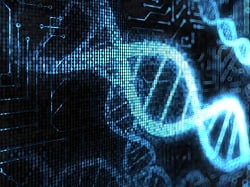First fully artificial yeast genome has been designed

Working as part of an international research consortium, a multidisciplinary team at the Johns Hopkins University has completed the design phase for a fully synthetic yeast genome.
The details of the design concept and process will be published March 10 in Science as part of a set of six articles; the other articles offer details of successful efforts to integrate artificial, or synthetic, yeast chromosomes into host yeast cells.
Once completed, yeast cells carrying a fully artificial genome — termed Saccharomyces cerevisiae 2.0, or Sc2.0 — “will prove invaluable for both academic and industrial applications,” says lead study author Joel Bader, Ph.D., professor of biomedical engineering and interim director of the High Throughput Biology Center at the Johns Hopkins University School of Medicine.
“Natural yeast is a major organism for making products used in biotechnology, such as enzymes or antibiotics, but optimizing it for new products is inefficient,” Bader says. “Our designed synthetic set of chromosomes permits the yeast genome to overcome this problem by optimizing itself on the fly.”
The design plan for the Sc2.0 genome is about 8 percent smaller than the natural yeast genome, with noncoding “junk” DNA removed. Other genetic sequences that can make DNA unstable and prone to mutations will be relocated under the design.
The synthetic genome also is designed for customization, so scientists can study questions related to the structure, function and evolution of chromosomes that are otherwise too difficult to answer.
For example, Bader notes that the Sc2.0 genome as envisioned is equipped with a biochemical system known as SCRaMbLE that allows researchers to simultaneously explore the outcomes of numerous variations in the copy number of genes so that the yeast strains will make more or less of particular proteins of interest.
Another exciting feature of Sc2.0, Bader says, involves the three-letter codes, known as codons, used to make proteins from DNA. Natural yeast has three “stop codons” that signal to protein-making machinery that a protein is finished, but Sc2.0 has been designed with just one. “This gives us the freedom to use the unused codons to essentially extend the genetic code for a particular purpose,” he says.
With the design for the artificial yeast genome now complete, Bader says, the next hurdle will be to integrate the synthetic genome into living, natural yeast cells. Six complete synthetic chromosomes have already been integrated into different living cells. The remaining chromosomes are progressing rapidly, and the final phase of the project will be to integrate all of the synthetic chromosomes into a single yeast cell.
Read the full Johns Hopkins Medicine press release here.
